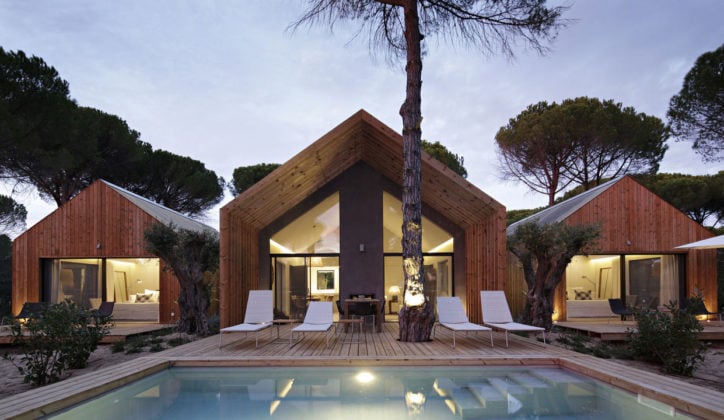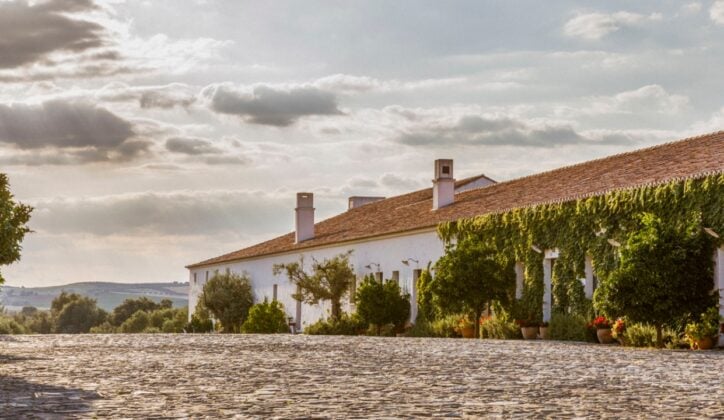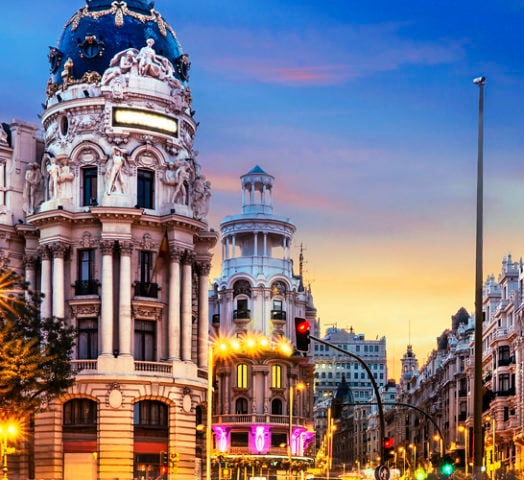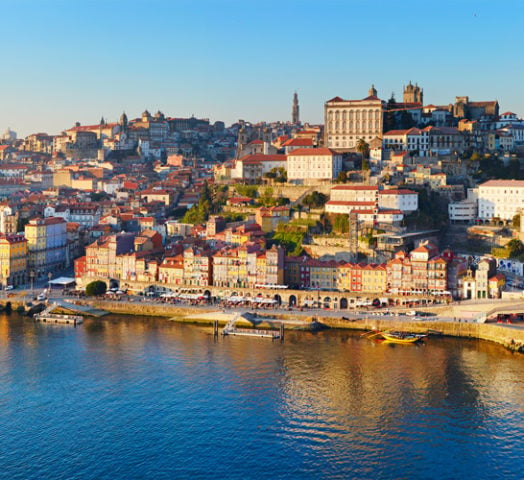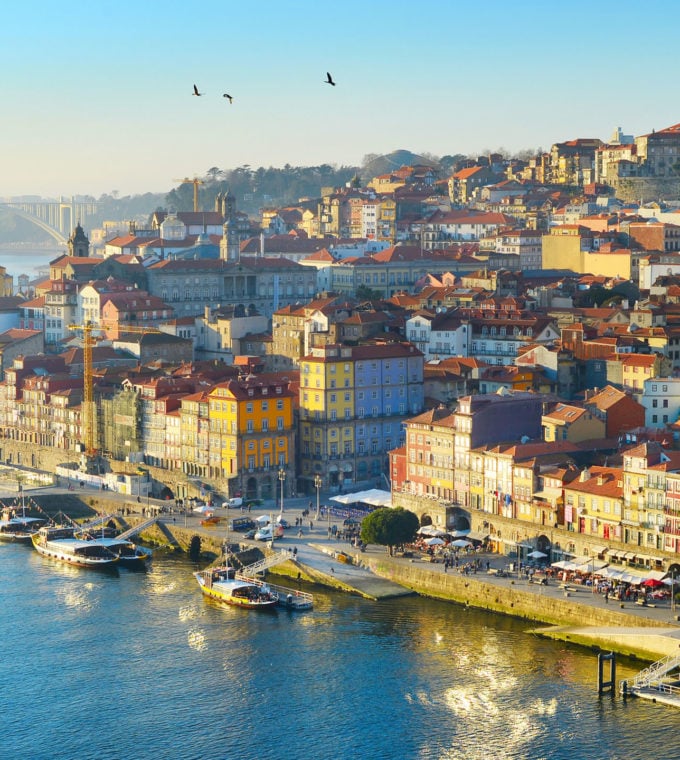Vineyards, beaches and ancient ruins
Covering almost a third of the country, Alentejo is a vast region of cork plantation, wheat fields, vineyards and clusters of historic hilltop towns. Its name means beyond the Tajo, and it stretches south from the River Tajo to the northern mountain ranges of the Algarve.
Explore the rolling hillsides, rugged peaks, endless plains and its sweeping Atlantic beaches. Vast swathes of sand lay sheltered between rocky cliffs and over 100km of the coastline is part of the South West Alentejo and Costa Vicentina National Park, an area rich in animal and plant life.
Heading inland, Alentejo is littered with Roman ruins, crumbling Moorish castles, marble towns and whitewashed villages. The UNESCO towns of Évora and Elvas are home to baroque bell towers, temples and mighty fortresses and there are plenty of smaller atmospheric towns with winding cobbled streets to explore.
Much of the population make a living from the huge agricultural estates, and Alentejo feels a world away from Portugal’s bustling cities. Take time to enjoy the relaxed way of life, experience its rustic cuisine and world-class wine, and the chance to explore this tranquil and beautiful region.
Highlights
Discover the dramatic coastline and rolling countryside of the South West Alentejo and Costa Vicentina National Park
Encounter Roman ruins across Alentejo’s sprawling landscapes
Be charmed by the authentic towns of Évora and Elvas
Sample some of the region’s world-class wines

James Wakelin
Travel Designer








Alentejo is a delightful part of Portugal, with beaches that stretch as far as the eye can see. Enjoy the tang of sea salt in the air on a hike along its rugged coastline, or marvel at the remains of roman ruins within the UNESCO World Heritage town of Évora. The possibilities are endless.

James Wakelin
Travel Designer
Luxury accommodation in Alentejo
Why book with Jacada?

Personalised design
We’ll plan your trip around your specific interests, tastes and preferences, providing helpful tips and honest advice based on first-hand knowledge of the destination.

Authentic experiences
Our expert guides and brilliant travel concierges are hand-picked to provide a genuine experience, bringing your destination to life with care and passion.

Responsible travel
Our luxury trips are designed with responsible travel principles that prioritise travel experiences that are both good for you and good for the planet.
Trip inspiration
Where else to visit
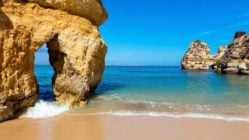
Algarve
Striking rock formations extend skywards from azure waters as the sun warms the sandy coastline. The southernmost part of Portugal, Algarve is most known for these Mediterranean beaches, quaint coves, fishing villages and luxurious hotels and eateries.
Discover more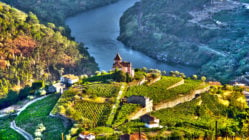
Douro Valley
The Douro River winds its way from the north of Spain, along the Portuguese border and eastward to Porto where it meets the sea. It is most famous for its port, a sweet brandy fortified wine that must originate in this valley to be considered the genuine article.
Discover more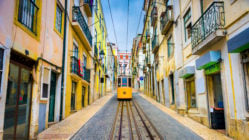
Lisbon
Europe’s second oldest capital, Lisbon is an effortlessly elegant city, full of old-world charm. Lisbon has plenty to offer, with a plethora of museums and galleries as well as beautiful buildings covered in iconic azelujo tiles.
Discover more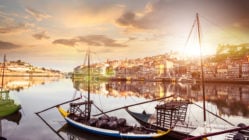
Porto
Built on a steep riverbank, a jumble of colourful medieval houses hug the calm waters of the Douro River where wooden boats bob on the surface and people spill out of its cafes and bars, more often than not with a glass of the wine that gave the city its name.
Discover moreMeet your Europe team
When to visit
For hiking, birdwatching and general exploring in the South West Alentejo and Costa Vicentina National Park, it’s best to avoid the warmest month of August, when conditions may be too hot. May, June and September are particularly rewarding for exploring Alentejo, as warm temperatures but fewer crowds make for a pleasant experience.

Outdoor Activities
March - May / September - October

Beach Break
June - September
Plan your trip to Alentejo
Whatever you want from your adventure in Alentejo, our team of expert travel designers are ready to help.
It was truly wonderful. This was one of the best trips we have ever taken. Further, working with Jacada made all the difference in the world! Every detail was carefully considered based on our “wishes and wants” for our trip to Spain and Portugal! Melania and Alice were amazing and we can’t tell you how grateful we are for their…
Jacada was very helpful in every aspect of planning our trip to Portugal. Kate Herz and Rita Pinto were so receptive to our thoughts and needs and made wonderful itinerary suggestions. All of our tour guides and drivers were experienced and informative and always punctual. The hotels (all fabulous) and activities which were recommended were fun and interesting and not…
Dan Rhodes, my travel agent was, was extremely smart and perceptive. He put together the perfect itinerary. The local agency, Made for Spain and Portugal was also terrific. I can’t praise Dan enough. I have seldom met anyone so amazing at listening and then working with your guidance to put together the trip of a lifetime. I have a lot…
Truly well thought out and personalized experience. Maximized appreciation of culture, excellent food choices and fantastic tours. Really well organized and made the trip so Memorable. Also provided excellent troubleshooting and hands on experience. Top notch overall experience on all levels.
We contracted with Jacada Travel on short notice (6 weeks advance) to plan a 9/10 day Food & Wine tour of Portugal. Our Travel Designer did an outstanding job of conferring with us identifying our preferences for this trip. She assembled an itinerary that encapsulated our desires and was perfect. Hotel accommodations were selected based on our preference to stay…
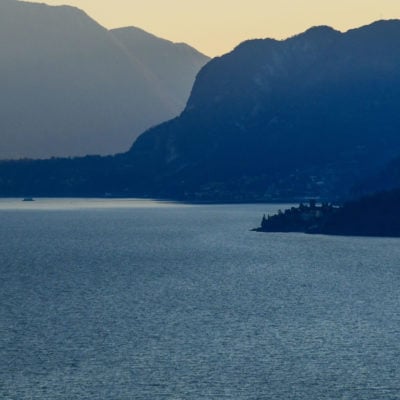

Plan with peace of mind
When you book a trip in today’s world there’s a lot to think about. But with the right advice and expert planning, you can do it with confidence.
If you book to travel with us but your plans are impacted by circumstances you can’t control, we’ll change your reservation or cancel your booking for a full credit towards future travel.





